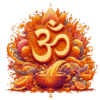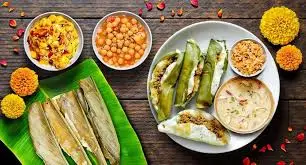India is a country rich in traditions, rituals, and festivals that celebrate every facet of life, from harvests to seasons, from religious beliefs to familial bonds. One such festival that stands out, particularly in Odisha, is Prathamastami. This festival is celebrated with deep reverence and affection for the eldest child of the family, marking a day of blessings, rituals, and family bonding. Rooted in Odia culture, Prathamastami is a celebration that transcends mere customs — it is an emotional tribute to the firstborn, the one who holds a special place in the heart of the family.
Observed primarily in the Margasira month of the Hindu lunar calendar (typically in November or December), Prathamastami is a festival that brings families together, reinforcing the values of health, prosperity, and love. Let’s take a deeper dive into the history, significance, rituals, and celebration of Prathamastami and explore why this festival continues to hold such importance in Odia households.
What is Prathamastami? A Glimpse into the Festival of the Firstborn
The name Prathamastami comes from two Sanskrit words: Prathama (meaning “first”) and Ashtami (meaning the eighth day). Traditionally, Prathamastami falls on the eighth day of the Krishna Paksha (the waning phase of the moon) during the Margasira month of the Hindu calendar. This day is dedicated to celebrating the firstborn child in the family, with the belief that by observing this ritual, the child will be blessed with a long, healthy, and prosperous life.
In Odia culture, the firstborn child, often the eldest son or daughter, is considered special. They are the first to carry the family legacy forward, inheriting responsibility and respect. Prathamastami is a celebration of this position within the family, where parents, relatives, and well-wishers offer prayers, blessings, and gifts to the eldest child to ensure their well-being.
Significance of Prathamastami in Odia Culture
Prathamastami holds deep cultural and spiritual significance in Odia culture. The festival is not just about celebrating the firstborn, but also about honoring family unity, tradition, and the role of the child in maintaining familial lineage. It is believed that the eldest child plays a key role in the family’s stability and prosperity.
In traditional Odia families, the firstborn child often assumes responsibility for looking after the younger siblings. They are seen as the future protector of the family, ensuring that the legacy and values are passed on. The prayers and rituals during Prathamastami symbolize the hope that the child will grow up to be a source of pride and strength for the family.
The festival also strengthens ties within the extended family. The maternal uncle (Mama) plays an important role in the celebration, gifting new clothes and other items to the eldest child. This exchange fosters a deeper bond between the maternal family and the child.
Rituals and Traditions of Prathamastami
The Puja and Prayers
Prathamastami is primarily a spiritual and religious occasion, marked by special rituals. The day begins with early morning prayers. The mother of the firstborn child conducts a puja in honor of the child. The child is bathed and dressed in new clothes, and the mother offers prayers for their long life, happiness, and good health.
The puja is usually held at the family home, but in some cases, families may also choose to visit local temples dedicated to Hindu deities to perform the rituals. The prayers are accompanied by offerings such as flowers, fruits, rice, milk, and turmeric, which is considered auspicious in many Indian rituals.
The Role of the Maternal Uncle (Mama)
One of the most unique and cherished aspects of Prathamastami is the role of the maternal uncle, or Mama. In many Odia households, the maternal uncle plays a central part in the celebration. He sends new clothes and gifts for his niece or nephew, a gesture of love and affection that reinforces the close bond between the maternal family and the child.
This tradition signifies the importance of the maternal side of the family in a child’s upbringing and blessings. The maternal uncle’s role is more than ceremonial; it represents a deeper familial connection and mutual respect.
Enduri Pitha: The Star of Prathamastami
Like any great festival in Odisha, food plays a pivotal role in Prathamastami. One of the most anticipated dishes is Enduri Pitha, a type of traditional steamed rice cake wrapped in turmeric leaves. The cake is filled with a sweet mixture of coconut, jaggery, and black sesame, and then steamed inside the leaves.
The use of turmeric leaves is not only for flavor but also symbolic. Turmeric is an integral part of Hindu rituals, representing purity and prosperity. The distinct aroma of turmeric adds a unique touch to the dish, making it a standout delicacy. After the puja, the Enduri Pitha is offered to the family deities and then shared with everyone present, marking the festive spirit of togetherness.
Apart from Enduri Pitha, families may also prepare other sweets like kheer (a rice pudding) or pakhala bhata (fermented rice), all of which reflect the richness of Odia cuisine.
Spiritual and Social Importance
Beyond the physical rituals and food, Prathamastami holds immense spiritual significance. The rituals are believed to purify the home, the family, and most importantly, the eldest child. The prayers offered during the puja are aimed at ensuring that the child remains safe, healthy, and successful in life.
The day is also about strengthening familial bonds, not only between parents and children but also between extended family members. The maternal uncle’s contribution is just one example of how Prathamastami fosters family unity and respect for elders.
The festival also brings families together to reflect on the importance of children in society. It’s a day that celebrates not just the firstborn but all children, recognizing their role as the future of the family and community.
Modern-Day Celebrations of Prathamastami
While Prathamastami has deep traditional roots, its celebration has evolved in modern times. In urban areas, where extended families may not live in close proximity, the rituals of Prathamastami are often carried out in digital ways. Many Odia families living outside Odisha or abroad participate in virtual pujas, sending gifts online, or even sharing traditional recipes like Enduri Pitha on social media platforms.
In some families, the puja may even be conducted in community settings, where a larger group of people, often from the same village or region, gathers to celebrate together. This has helped preserve the essence of Prathamastami, even as the way it is observed has become more diverse.
Conclusion: Preserving Tradition, Celebrating Family
At its core, Prathamastami is more than just a festival — it is a celebration of family, tradition, and blessings. It underscores the importance of the firstborn in Odia culture, celebrates the deep familial bonds that transcend generations, and showcases the beautiful rituals that have been passed down through centuries.
As families gather to perform the puja, offer Enduri Pitha, and share in the joy of togetherness, Prathamastami reminds us of the timeless importance of family, faith, and love. Whether celebrated in the heart of Odisha or far from home, the spirit of Prathamastami will continue to thrive in every household that honors its legacy.
🪔 Frequently Asked Questions (FAQ)
1. What is the significance of Prathamastami?
Prathamastami is dedicated to celebrating and blessing the eldest child of the family, with prayers for their long life, health, and prosperity. It reflects the deep cultural and spiritual significance placed on the firstborn in Odia families.
2. When is Prathamastami celebrated?
Prathamastami is observed on the eighth day (Ashtami) of the Krishna Paksha in Margasira month of the Hindu lunar calendar, typically falling in November or December.
3. What is the role of the maternal uncle (Mama) in Prathamastami?
The maternal uncle (Mama) plays a crucial role by sending gifts and new clothes for the firstborn, symbolizing his blessings and affection. This act helps strengthen the bond between the maternal side of the family and the child.
4. What role does the maternal uncle (Mama) play in Prathamastami?
The maternal uncle sends new clothes and gifts to the eldest child. This act represents his blessings and affection, reinforcing the bond between the maternal family and the child.
5. Is Prathamastami celebrated only in Odisha?
Prathamastami is primarily an Odia festival, but many Odia families living outside the state — and even abroad — continue to celebrate it to stay connected to their roots.
6. What are some other famous Odia festivals?
Apart from Prathamastami, Odisha is famous for festivals like Raja Parba, Rath Yatra, Durga Puja, and Kumar Purnima, each carrying its own unique cultural and social meaning.
Krishna Mishra writes for Insights of Hinduism, where he shares heartfelt thoughts on festivals, traditions, and the timeless wisdom of Sanatan Dharma. His aim is to keep the essence of Hindu culture alive in a way that feels simple, authentic, and relatable to everyone.


